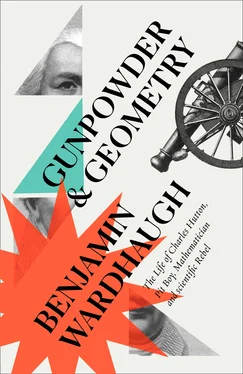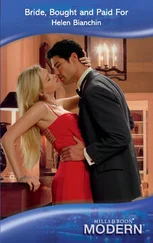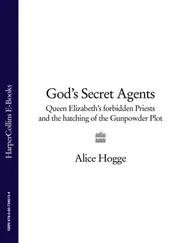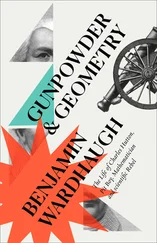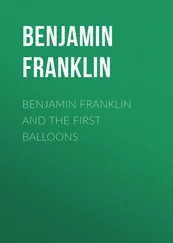All this was very well, but as the reviewers were quick to point out, few people could have been less qualified than Charles Hutton to lay down strictures about how a bridge should be built. He had no practical knowledge of structural engineering, and his mathematical analyses both contained elementary technical errors and displayed total ignorance even of the actual shapes of bridges. His formulae produced absurd results, demanding a bridge of infinite thickness in some cases. ‘We are at a loss to account for the author’s design in presenting this work to the public,’ concluded one. If that stung, and if Hutton regretted his rush into print, his reputation by this point could stand the damage.
Another large project was already in hand, too: a cheeky scheme to reprint The Ladies’ Diary itself. What better way to appeal to the philomaths of Britain? Hutton proposed a five-volume collection featuring every puzzle, problem, question and answer that had appeared in the Diary since its foundation in 1704.
It was a finely judged plan. Older copies of the original Diary were hard to come by – some issues extremely so – and as long as the price was right most of the hundreds of British philomaths could be relied on to purchase this collected edition of their favourite reading. Yet it would involve very little work: simply transcribing and very lightly rearranging the text from seventy slim pamphlets. Hutton even engaged an assistant to do the actual editing. (George Coughron’s was an interesting story in itself, but a tragically short one. Son of a farmer, good at mathematics, he won a national mathematics competition sponsored by the British Oracle and moved to Newcastle, where he fell in with Hutton, perhaps a little in awe of the older man – he was twenty to Hutton’s thirty-five. Their collaboration was not to continue past the Ladies’ Diary project, and Coughron fell victim to smallpox in 1774.)
Hutton added more extra matter to his Diarian Miscellany than might have been expected. It was issued in quarterly ‘parts’, and to each he appended a selection of new mathematical essays and correspondence. In true philomath style he also included a set of questions each time: readers’ answers to be printed in the following issue.
Hutton’s associates Coughron and Fryer themselves made contributions, as did a range of big names in the philomath world and a number of other people who were probably Hutton himself: ‘Nauticus’, ‘Geometricus’, ‘Astronomicus’ and ‘Analyticus’. He felt confident enough to admit to some errors in his Mensuration . But the problems column never really took off, perhaps because the market was already so crowded.
Nevertheless, Hutton found plenty of buyers for the Miscellany : it came out in slim ‘parts’ between July 1771 and July 1775. His publisher once again pushed the project hard, taking out advertising space in the national papers for every one of the thirteen separate parts.
So good was the idea that someone tried to copy it, and Hutton found himself with a rival. Samuel Clarke launched a Diarian Repository in 1774, printing just the mathematical items from The Ladies’ Diary and leaving out the other puzzles, and there was an undignified flurry of adverts and counter-adverts in the press. Hutton thought the work defective and took to calling it the ‘Repository of Errors’, but he was badly rattled by the incident, and matters were not helped when a couple of the numbers of his Miscellany were delayed at sea by bad weather; printing in Newcastle for distribution from London had its perils. But Hutton won the day. Clarke’s Repository abruptly ceased to appear, some months before reaching completion.
When Hutton’s Miscellany was printed complete in 1775, the collection made a handsome set of five neat volumes for which the publisher asked one pound nine shillings. The new matter took up an extra volume by itself, and was separately titled – a little pompously – Miscellanea Mathematica . Well indexed, the Miscellany became for some decades the standard reference for The Ladies’ Diary and its problems and contributors, and it incidentally contributed much to the Diary ’s accessibility to modern historians.

Up to this time – the early 1770s – it’s not clear that Hutton’s relentless self-promotion in print had any very definite object. There were a number of relatively prestigious mathematical appointments available in Great Britain, including teaching jobs at institutions like the Royal Mathematical School at Christ’s Hospital, or the public lecturing posts at Gresham College in London. The chairs at Oxford and Cambridge were not realistically open to someone without a university degree, but a position in one of the ancient Scottish universities might have been possible with the right use of Hutton’s personal network. If he explored any of these possibilities, no trace of it has survived.
What happened in fact was a little more surprising.

Hutton was in London on Mensuration business when he heard from a friend – Edward Williams of the Royal Artillery – that an unusual job was open. John Lodge Cowley, professor of mathematics at the Royal Military Academy at Woolwich, had retired due to declining health. The job attracted two hundred pounds a year and a house at the Academy. Plenty of people wanted it, and quite probably some of them knew some mathematics. The official in charge – George, Viscount Townshend, Master-General of the Ordnance – reckoned it would be a good idea to fill the post with a man of ability rather than a well-connected nonentity. He had taken the rare step of announcing a public competition, giving it to be understood that ‘merit alone’ would decide the result. Advertisements had appeared in the newspapers.
Williams urged Hutton to present himself as a candidate. Back in Newcastle his supporter Robert Shaftoe did the same, and Hutton let himself be persuaded. In May 1773 he travelled back to London to take part in the supposedly impartial competition.
Merit alone? ‘Merit is useless,’ wrote Horace Walpole, ‘it is interest alone that can push a man forward. By dint of interest one of my coach-horses might become poet-laureate, and the other, physician to the household.’ There were increasingly meaningful public examinations at the British universities during the eighteenth century, and it was not absolutely unknown for public appointments to be made on a competitive basis. Expectations about public life and the right use of patronage were changing, after all, but they were changing slowly.
So the candidates for Townshend’s ‘impartial’ examination turned up armed with the usual array of recommendations from noblemen and politicians: testimonials, promises of favour or reminders of favours owed. Hutton would later claim that he himself competed ‘without any interest’. But in reality he too took his precautions. He obtained a recommendation from his acquaintance the Duke of Northumberland, to whom he had dedicated his Mensuration . Northumberland was a prominent Tory, a colliery owner and a Fellow of the Royal Society, and he controlled seven votes in Parliament. Through Robert Shaftoe, Hutton also obtained a recommendation from the Earl of Sandwich, a Whig (the party was in power at the time) who had been First Lord of the Admiralty; to Master-General Townshend his was probably a louder voice than Northumberland’s. Having covered both political bases, Hutton finally equipped himself with a letter from the prominent northern mathematician William Emerson, testifying to his intellectual abilities. Thus protected, he faced the examiners.
Читать дальше
